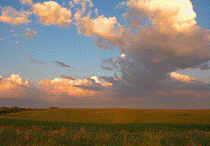North American Prairie Conference
Date of this Version
1989
Document Type
Article
Abstract
A prairie site at Pipestone National Monument in southwestern Minnesota was burned each spring from 1983-1987. During the past century of use, much of the site had been invaded by various, non-native, cool-season grasses and broadleaf weeds. Also, various woody species have invaded parts of the site. Annual bums generally induced positive changes in native remnants, primarily with big bluestem (Andropogon gerardii Vitman) and prairie dropseed (Sporobolus heterolepis A. Gray) increasing cover from 6.4 to 21.0%. Cover of native forbs also increased, from 6.5 to 12.8%, due to increased vigor of existing plants and establishment of new individuals. While some tree and shrub species were pennanently damaged, wild plum (Prunus americana Marsh), chokecherry (Prunus virginiana L.), and smooth sumac (Rhus glabra L.) re-sprouted from underground parts each year and were able to maintain or slightly increase pre-bum cover levels, although stature was reduced. Dense stands of quackgrass (Agropyron repens Beauv.) were reduced in height and vigor, but, unlike stands dominated by other species, were not open to establishment of prairie species. In general, while prescribed burning triggered increases of diversity, cover, and vigor of native prairie species, this was not a uniform effect across the site as most changes occurred within and along the edges of existing prairie remnants. Essentially no changes were observed within the large stands of quackgrass in which additional suppression of the sod is required, which could be accomplished by delay of spring burning, summer mowing, and plantings of native plant materials.



Comments
Published in Prairie Pioneers: Ecology, History and Culture: Proceedings of the Eleventh North American Prairie Conference, August 7-11, 1988, Lincoln, Nebraska (Lincoln, NE 1989).